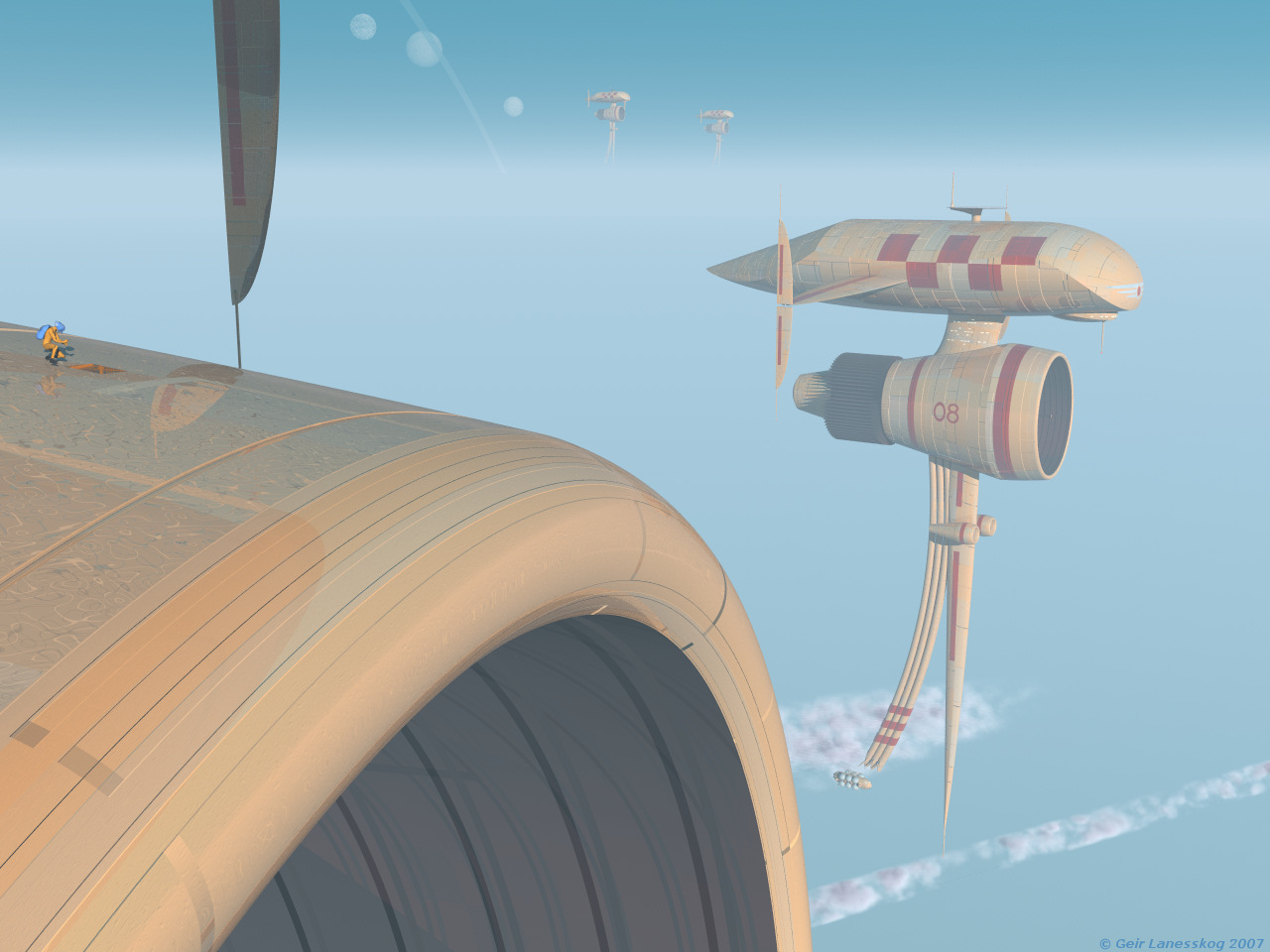
 |
|||||||
|
|
|
|
|
|
|

Sky Miner
[begin science lesson]
As an aside, here's an astronomy lesson I learned while making this image. I'm
afraid Jeremy is right: big giant moons are unrealistic. I suppose if your world
is a moon, then having the planet as a big giant object in the sky makes sense,
but in this solar system at least, it doesn't match reality.
Now that Pluto has been demoted, from any planet's surface (or upper atmosphere
for gas giants) the only moon that looks bigger in the sky than the Earth's moon
looks to us is Jupiter's moon Io, and only barely so. Most moons look much
smaller - only a half dozen look half as big as the Moon. Ironically, the
largest moon doesn't always the turn out to be the one that looks biggest from
down below. For instance, Io, not Ganymede, looks biggest from Jupiter. From
Uranus - the scene in this image - Ariel looks the biggest, and even little (and
closer) Miranda looks bigger than Titania, the physically largest moon. These
three moons are reflected in proper relational sizes in this image. But even
here, given the "camera angle" in Bryce, the moons actual have four times the
angular size than they should, had this been 100% realistic. But it's not. It's
just a picture.
[end science lesson]
---
Gas rigs look a little weird from the outside. On top, they've got a giant
dirigible for flotation. It's filled with vacuum, which doesn't make a lot of
sense until you realize than nothin' is lighter than nothin'. Looks like a goofy
cyclops whale, since the Emperor's logo got splatter on its nose. Meaning no
disrespect...
The gondola and the neck below the empty bag is where all the people live and
work. Under that is the business end of the platform, the Intake, where I do all
my work. The Intake sucks in the raw atmosphere, separates out the heavier
gasses, and keeps the valuable ones: deuterium, helium three and xenon,
liquefies them, and stores them in three long tubes for the tankers to suckle
on. The ventral fin is where the engines are, but mostly we coast the jet stream
in formation. It's a living. My uncle Sal got me the job. He's shop steward for
Sky Miners Local 20 on this rig.
And yeah, outside work would be safer if we did it with robots, or at least
remotes. But we get double pay and extra paid time off for every EVA. I can
thank the Union for that.
And no, we don't wear any tethers. Turns out too many people were falling and
smashing themselves against the hull like a meat pendulum. A couple of whacks
like that and you're pretty much hamburger. The magnetic boots keep us pretty
steady, and if we do fall, there's no ground.
Yeah. That one blew my mind at first. But look at it this way: terminal velocity
is about two hundred kph. The suit can handle the pressure down another 200
klicks or so. So you can fall for an hour - more, since the air gets thicker.
And since the search and rescue - SAR - pods can fly twice the speed you fall,
then you only actually fall for twice the amount of time it takes to dispatch a
pod. Trust me on this, I did the math when I was falling.
The on-call pod drivers have a contract guaranteed launch time of five minutes,
so you shouldn't fall for more than ten. But it seems longer, let me tell you.
Now, if they used robots to fly the SAR pods, you'd probably get rescued within
a minute, two at the most. But SAR Pilot is a Union job. You can thank Uncle Sal
for that. On second thought, forget I mentioned it.
All pages and images ©1999 - 2007
by Geir Lanesskog, All Rights Reserved
Usage Policy
![]()